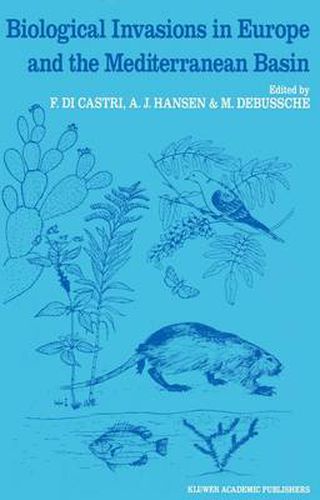Readings Newsletter
Become a Readings Member to make your shopping experience even easier.
Sign in or sign up for free!
You’re not far away from qualifying for FREE standard shipping within Australia
You’ve qualified for FREE standard shipping within Australia
The cart is loading…






This title is printed to order. This book may have been self-published. If so, we cannot guarantee the quality of the content. In the main most books will have gone through the editing process however some may not. We therefore suggest that you be aware of this before ordering this book. If in doubt check either the author or publisher’s details as we are unable to accept any returns unless they are faulty. Please contact us if you have any questions.
In view of the massive change in the area of distribution of many world biota across classical biogeographical realms, and of the drastic restructuring of the biotic components of numerous ecosystems, the Scientific Committee on Problems of the Environment (SCOPE) decided at its general Assembly in Ottawa, Canada, in 1982 to launch a project on the ‘Ecology of Biological Invasions’. Several regional meetings were subsequently organized within the framework of SCOPE, in order to single out the peculiarities of the invasions that took place in each region, the behaviour of their invasive species and the invasibility of their ecosystems. Most noteworthy among such workshops were one in Australia in August 1984, one concerning North America and Hawaii in October 1984, and one dealing with southern Africa in November 1985. A leitmotiv of these workshops was that most of the invasive species to those regions were emanating from Europe and the Mediterranean Basin, inadvertently or intentionally introduced by man. It was therefore considered as a timely endeavour to organize the next regional meeting in relation to this region. The workshop on ‘Biological Invasions in Europe and the Mediterranean Basin’ was held in Montpellier, France, 21 to 23 May 1986, thanks to the financial support of SCOPE and of the A.W. Mellon Foundation, and the logistic facilities of the Centre National de la Recherche Scientifique (C.N .R.S.).
$9.00 standard shipping within Australia
FREE standard shipping within Australia for orders over $100.00
Express & International shipping calculated at checkout
This title is printed to order. This book may have been self-published. If so, we cannot guarantee the quality of the content. In the main most books will have gone through the editing process however some may not. We therefore suggest that you be aware of this before ordering this book. If in doubt check either the author or publisher’s details as we are unable to accept any returns unless they are faulty. Please contact us if you have any questions.
In view of the massive change in the area of distribution of many world biota across classical biogeographical realms, and of the drastic restructuring of the biotic components of numerous ecosystems, the Scientific Committee on Problems of the Environment (SCOPE) decided at its general Assembly in Ottawa, Canada, in 1982 to launch a project on the ‘Ecology of Biological Invasions’. Several regional meetings were subsequently organized within the framework of SCOPE, in order to single out the peculiarities of the invasions that took place in each region, the behaviour of their invasive species and the invasibility of their ecosystems. Most noteworthy among such workshops were one in Australia in August 1984, one concerning North America and Hawaii in October 1984, and one dealing with southern Africa in November 1985. A leitmotiv of these workshops was that most of the invasive species to those regions were emanating from Europe and the Mediterranean Basin, inadvertently or intentionally introduced by man. It was therefore considered as a timely endeavour to organize the next regional meeting in relation to this region. The workshop on ‘Biological Invasions in Europe and the Mediterranean Basin’ was held in Montpellier, France, 21 to 23 May 1986, thanks to the financial support of SCOPE and of the A.W. Mellon Foundation, and the logistic facilities of the Centre National de la Recherche Scientifique (C.N .R.S.).